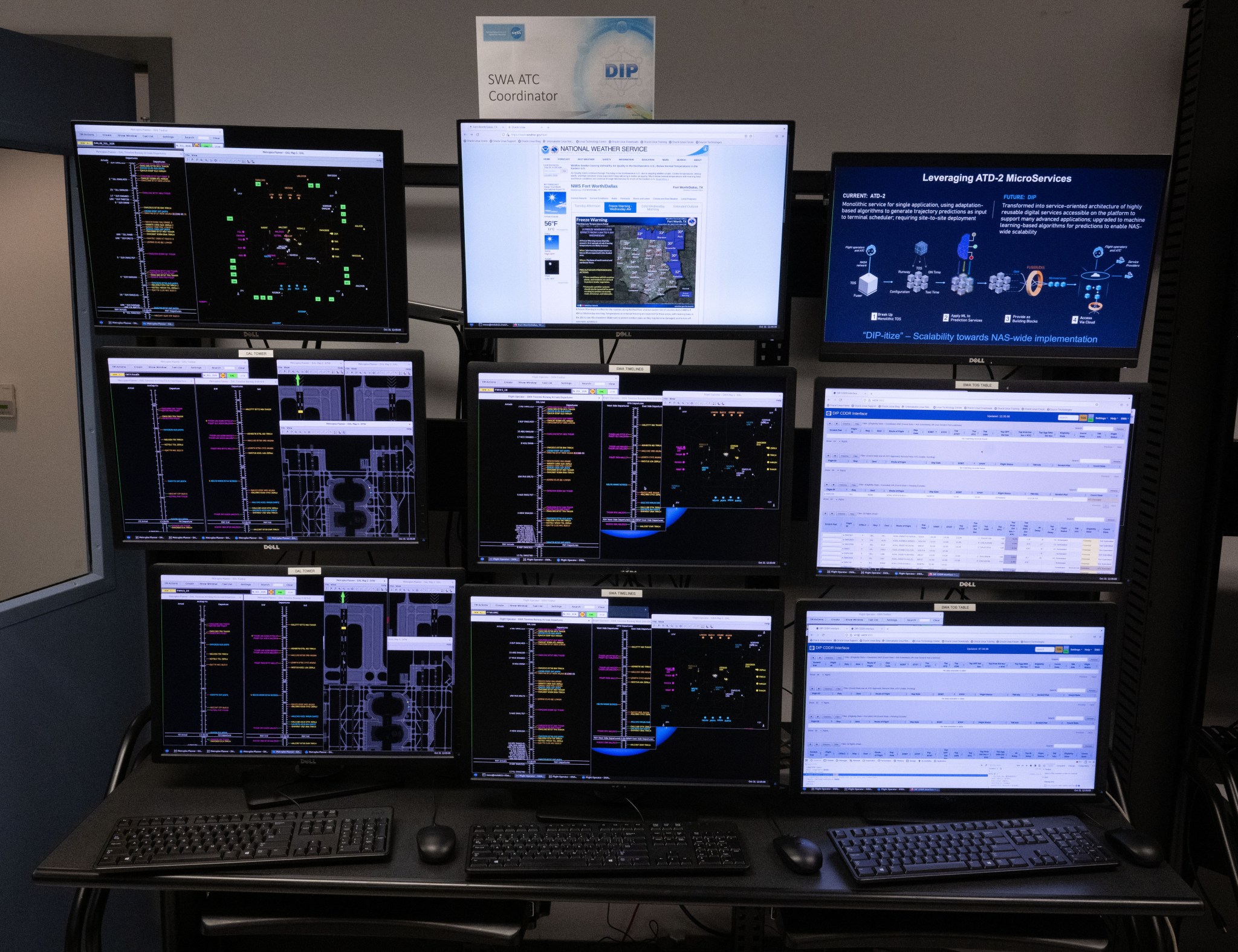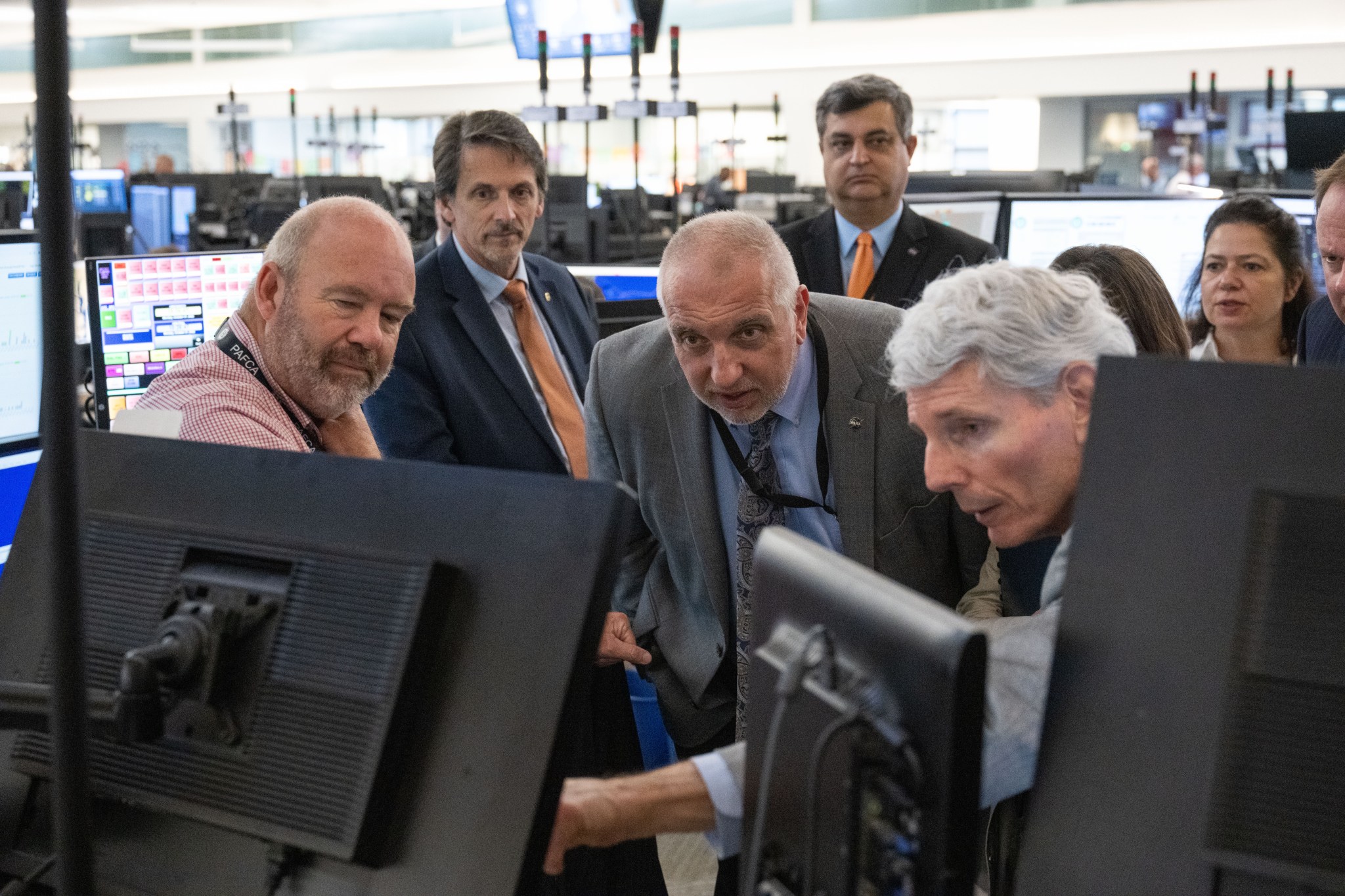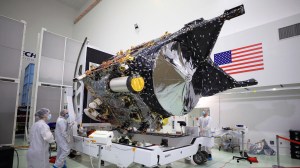A NASA air traffic management planning tool has saved more than 24,000 pounds of jet fuel and prevented the release of more than 77,000 pounds of carbon dioxide emissions into the atmosphere since it was implemented at the Dallas-Fort Worth International Airport (DFW) in January 2022. By using machine learning to predict traffic conditions based on real-time data, the tool could improve air traffic operations in major airports across the country in the future.
NASA’s Digital Information Platform (DIP) project partnered with Southwest Airlines, American Airlines and the Federal Aviation Administration (FAA) to begin testing the Collaborative Digital Departure Reroute (CDDR) tool earlier this year. CDDR improves current air traffic operations at commercial airports by integrating air traffic data from the FAA and surface traffic data from the airlines and applying machine learning to provide traffic predictions about future runway availability and estimated departure and arrival times. Airline operators use these predictions to schedule the optimum time an airplane should takeoff to make a seamless entrance into the overhead stream of traffic. This reduces the time planes spend idling on the runway, as well as fuel use and emissions.
American and Southwest flight coordinators have since used CDDR’s traffic predictions to identify alternate takeoff routes to avoid delays during periods of high traffic when airspace constraints limit the capacity and need to balance the excess demand. This has improved air traffic management operations, reduced delays, and saved fuel.
NASA leadership recently visited the airlines’ operation centers near DFW to see the air traffic management planning tools in action.
“This planning tool utilizes the cutting-edge capability of machine learning to transform air traffic management and significantly reduce carbon emissions at major airports and other locations throughout the country,” said Bob Pearce, associate administrator for NASA’s Aeronautics Research Mission Directorate. “Demonstrating CDDR in real airport traffic operations is an important step toward making air travel more efficient and environmentally sustainable for the info-centric airspace of the future.”
Over the past year, NASA engineers have analyzed the CDDR tool’s ability to use machine learning to accurately predict traffic conditions based on historical and real-time traffic data at DFW. Particularly, engineers were interested in the tool’s ability to accurately predict traffic conditions during months with heavy rain, which are often accompanied by an increase in traffic backups. The team evaluated CDDR’s performance by analyzing and comparing the number of reroutes identified by the tool, the number of reroutes requested by operators, how many requests were ultimately approved, and how much jet fuel was saved as a result. The tool’s machine-learning-based predictions were slightly better than previous predictions, according to project engineers.
Improving and expanding the use of this machine-learning capability is an important milestone for the project. It means the tool could be more easily adopted at other airports across the country.
“Reusability of a service is a big deal,” said Mirna Johnson, DIP project manager. “Because each airport surface is unique, it is very difficult to create a solution for one airport that will work for another. Machine learning allows us to use the same machine-learning models for multiple airports.”
This year, NASA engineers will test a cloud-computing-based version of the system at DFW. Then the DIP project team will test the system’s adaptability by implementing it at different locations across the country. The goal is to validate the tool so it can be implemented and provide benefit at major airports throughout the country. This effort directly supports NASA’s contributions to the United States’ aviation goal of reaching net zero carbon emissions by 2050.
CDDR builds on the capabilities and benefits of a similar tool implemented under NASA’s Air Traffic Demonstration 2 (ATD-2) project at Charlotte Douglas International Airport (CLT). The tool demonstration at CLT saved more than one million gallons of jet fuel, 23.2 million pounds of emissions, and more than 6,000 hours of engine run time between September 2017 and September 2021. DIP’s CDDR tool goes one step beyond the ATD-2 single airspace tool because it’s designed to be adaptable and scalable for use in many airspaces by many different users, including passenger and cargo flight operators and cargo carriers.
DIP is a subproject of NASA’s Air Traffic Management (ATM-X) project and is led out of NASA’s Ames Research Center in California’s Silicon Valley.





































